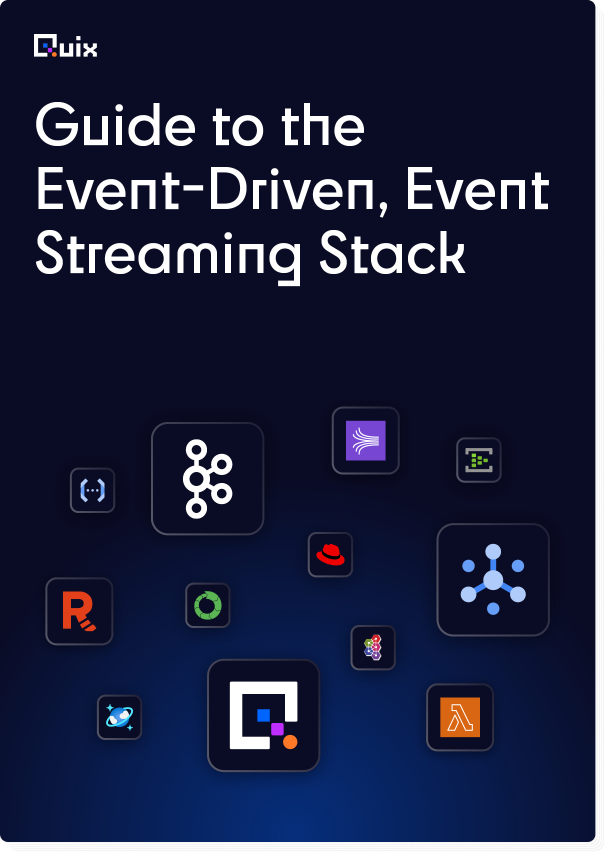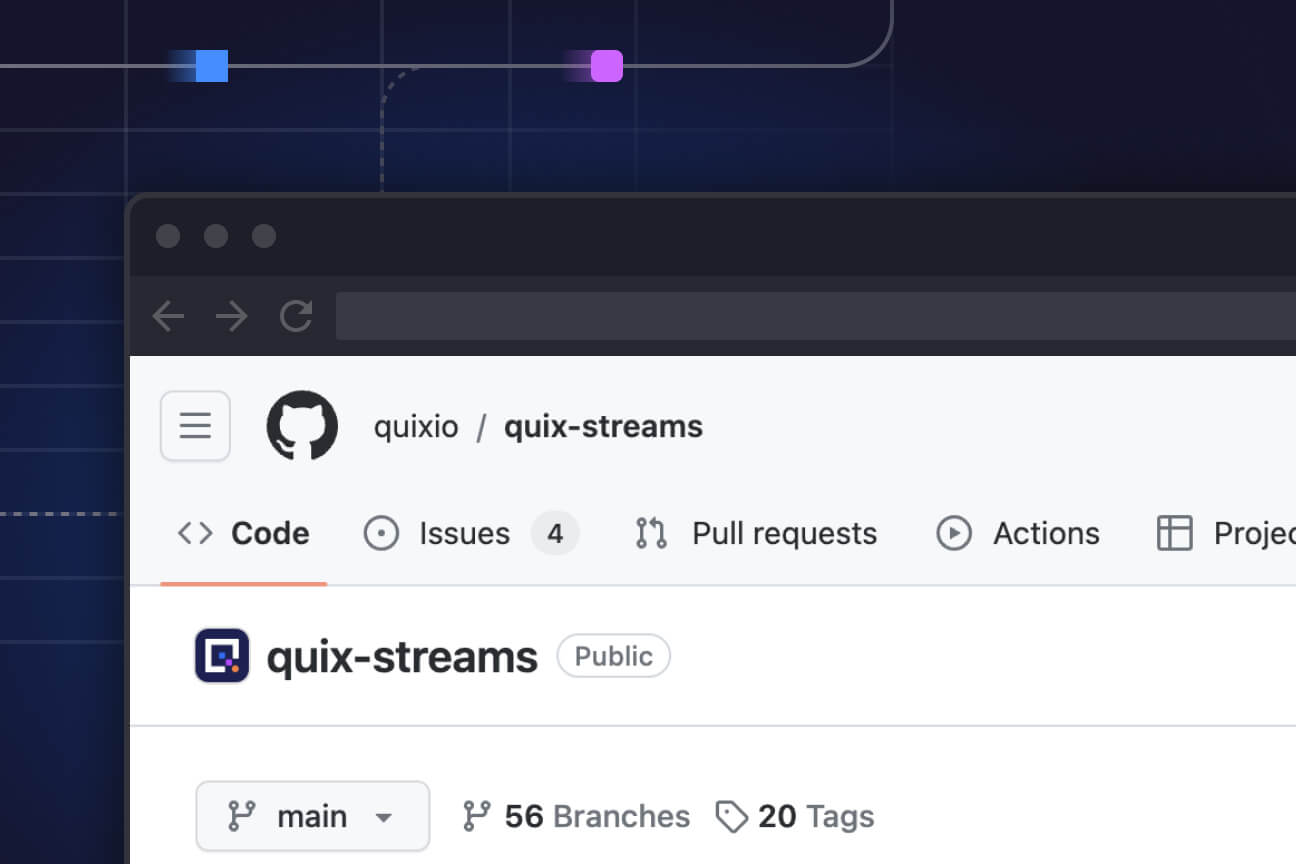Ensuring data speed and resiliency in a mobile IoT application
Find out how 82 ML models — all deployed in just two weeks — significantly improved network connectivity and reduced operating costs for a leader in mobility.

Control guaranteed race-winning connectivity in just two weeks
It’s not enough to connect IoT devices. As these devices become increasingly mobile, it’s essential to keep them connected — ensuring their data flow and is captured flawlessly, no matter where they move.
This was the challenge for Control, the telemetry company specializing in race car data connectivity. From Daytona to Le Mans to Nurburgring, Control engineers ensure that data moves seamlessly from the devices in the car to race engineers located worldwide.

The problem: Automatic network connection was not optimal, and manual configuration is costly
Control supplies racing teams and manufacturers with race-winning telemetry solutions. These cellular devices contain three modems, allowing the device to be attached to up to three mobile networks simultaneously. The device can automatically switch between these modems up to 15 times per second during the race to optimize connectivity.
“The problem: if a modem automatically connects to the first available network, instead of the best network, this can degrade performance up to 23%.”
The problem was that when a device arrived at a new racetrack, the modems automatically connected to the first available network, not the best available network. This could lead to performance degradation of up to 23% compared to an optimal condition.
Initially, this problem was solved manually. A Control engineer would log in to an online portal, review the historical signal quality for the location, and set a priority network for the device. The problem with manual configurations:
- They take significant engineering resources, about an hour per session to configure 30 cars
- Devices can be missed, leading to support calls and a scramble to reconfigure
- Customers attending unsupported test days can suffer needless performance degradation, leading to support calls and manual reconfiguration
- A sudden change in network conditions, such as an operator outage, requires manual remediation mid-session
To improve their product and reduce operational costs, Control needed:
- A way to automate the configuration of their IoT devices
- A way to monitor, test, optimize and edit the configuration while the device is in operation
The solution: Machine learning automates network performance detection and optimizes routing
Control partnered with Quix to build and deploy an ML model that could automatically detect network performance in real time and optimize connectivity by automatically updating the device configuration.
However, machine learning models are rarely simple and often take months or even years to deploy. A Dotscience report revealed that 64.4% of the organizations surveyed take 7–18 months to develop ML and AI models from idea to production.
Control needed to build and execute this project a whole lot faster. So they turned to Quix’s production-ready stream processing platform to help them quickly build, train, test and deploy a fast and resilient ML system.

Quix’s solution called for these steps:
- Connect Quix to Control’s existing Azure Event Hub infrastructure to receive data streams
- Transform raw messages into a structured data schema with standard business semantics
- Contextualize data, so each car is associated with just one data stream
- Store high-quality data from actual vehicles and train ML models on that data
- Deploy the models into a stream processing pipeline to rank the best connectivity
- Automatically update a configuration table in real time to optimize connectivity
Because Control’s devices operate in various locations, Quix’s solution created 82 machine learning models — one for each venue and transmission mode — to tailor the solution to each environment. The models rank all available networks, weigh multiple variables and deliver a single recommendation for the best network at any point.
This didn’t just work for real-time data. The ML models were also able to predict real-time network performance using historical data. And when new venues are added, the ML script alerts engineers that these also must be added to the set of models.
This result is populated to live streams to enable automation — continuously ranking the networks to maximize speed and connectivity.
The results: Improved performance and reliability while reducing operating costs
Control’s use of Quix has enabled the company to update each car’s connectivity automatically. Previously, a Control engineer had to configure and test each car for each session manually. Now, the vehicles configure themselves.
“The solution took a massive operational burden off of Control engineers’ shoulders, while also eliminating the risk of performance degradation.”
This took a massive operational burden off Control engineers’ shoulders while eliminating the risk that a customer would needlessly suffer up to 23% performance degradation.
Control’s journey to developing and deploying ML models seemed, at first, like an impossibility. The company’s small team leaned heavily toward software engineers rather than data scientists, and they found it to be too costly and time consuming to build on Microsoft Azure.
“In partnership with Quix, Control was able to stand up, train, test and deploy 82 ML models in just two weeks.”
In partnership with Quix, Control stood up, trained, tested, and deployed 82 ML models in just two weeks. In addition, Quix provided Control with a more resilient data pipeline by replicating and sharding the data and the processing. This gave Control confidence that their new data product would perform consistently without adding resources to monitor and maintain the system.
The business outcome
By using Quix, Control can take action on live data the moment it is created rather than waiting until after the race is over.
“We’re always looking for an incremental edge in reliability and performance,” said Nathan Sanders, technical director and founder of Control. “To guarantee race-winning connectivity in just two weeks, with machine learning models performing as well as our expert engineers, lets us build differentiated products that increase value for our customers.”
“The lightbulb moment happened when we realized how resilient Quix is. We’ve automated a new product feature and Quix’s architecture gives us confidence it won’t fail.”
Nathan Sanders, Technical Director and Founder of Control
Sanders continued: “The lightbulb moment happened when we realized how resilient Quix is. Reliability is a major consideration when building mission-critical products. We’ve automated a new product feature and Quix’s resilient architecture gives us confidence it won’t fail.”
Quix CEO Mike Rosam believes Control’s solution has an opportunity to massively improve connectivity for the mobility and logistics industries, which require live data from their always-moving assets and would significantly benefit from ML and automation.
The “last mile” of connectivity — from the cell tower to the IoT device at the edge of a network — is a persistent problem for mobile IoT device operators. Whether it’s a rideshare app, autonomous vehicle, drone delivery, or urban scooter provider, mobility solutions are underpinned by network connectivity.
“Many companies have people who can write Python code — domain experts in physics, biology and mechanical engineering, for example — and with Quix, those people gain the ability to build data products,” Rosam explained. “Quix makes machine learning accessible to all of them by taking care of the complex data infrastructure while providing a simple user interface. As a result, domain experts don’t have to waste time fighting with IT, instead they can start building differentiated products quickly.”
Control’s use case proved three essential cases for Quix:
- Providing data resiliency through its system design, so not a byte of data is lost
- Ensuring network performance at scale for moving assets, and
- Rapidly developing ML models that can be trained on historic data and automatically re-trained to adapt to new conditions in production.
If you’re curious to learn more about how to apply this solution to your company, book a consultation with our technical experts. Or chat with us in our Slack community.
What’s a Rich Text element?
The rich text element allows you to create and format headings, paragraphs, blockquotes, images, and video all in one place instead of having to add and format them individually. Just double-click and easily create content.
Static and dynamic content editing
A rich text element can be used with static or dynamic content. For static content, just drop it into any page and begin editing. For dynamic content, add a rich text field to any collection and then connect a rich text element to that field in the settings panel. Voila!
How to customize formatting for each rich text
Headings, paragraphs, blockquotes, figures, images, and figure captions can all be styled after a class is added to the rich text element using the "When inside of" nested selector system.

Check out the repo
Our Python client library is open source, and brings DataFrames and the Python ecosystem to stream processing.

Interested in Quix Cloud?
Take a look around and explore the features of our platform.

Interested in Quix Cloud?
Take a look around and explore the features of our platform.







